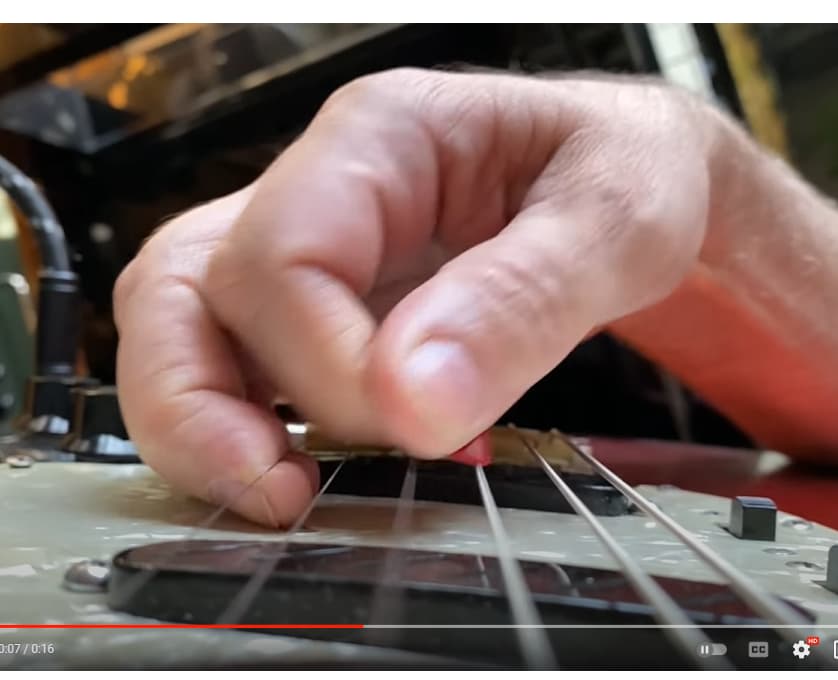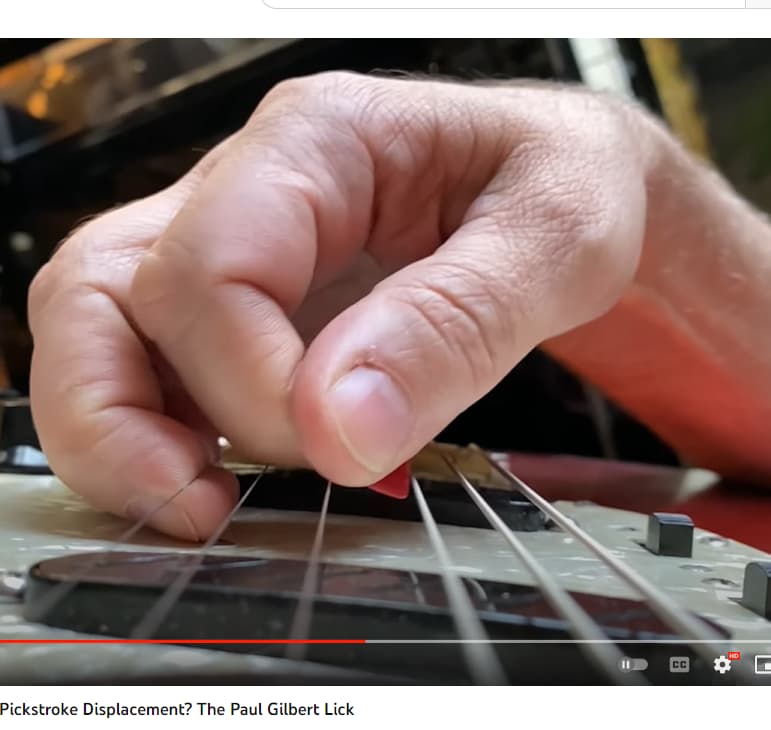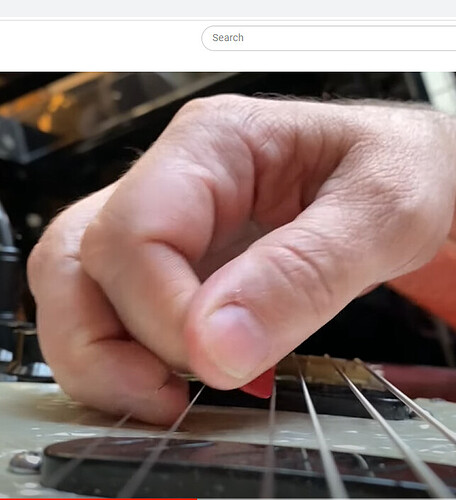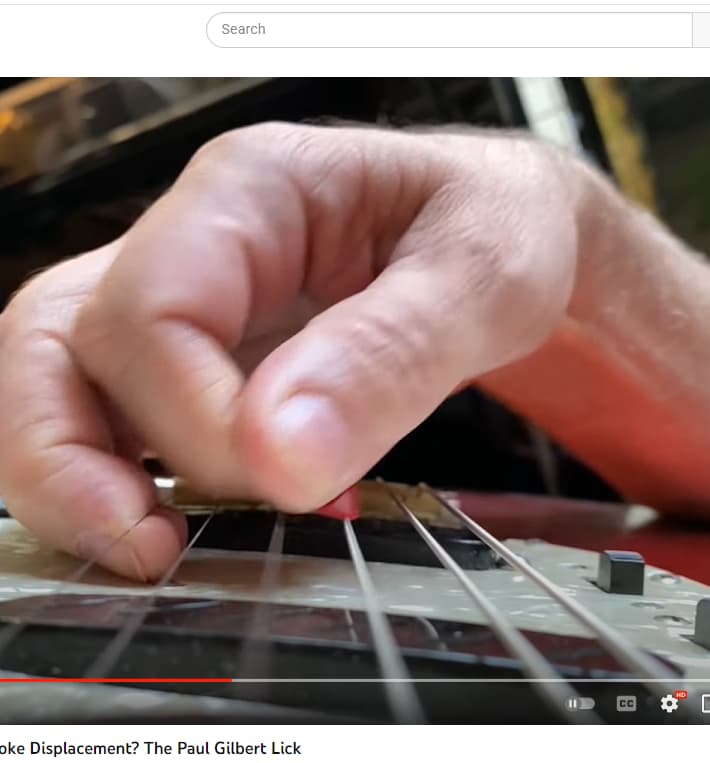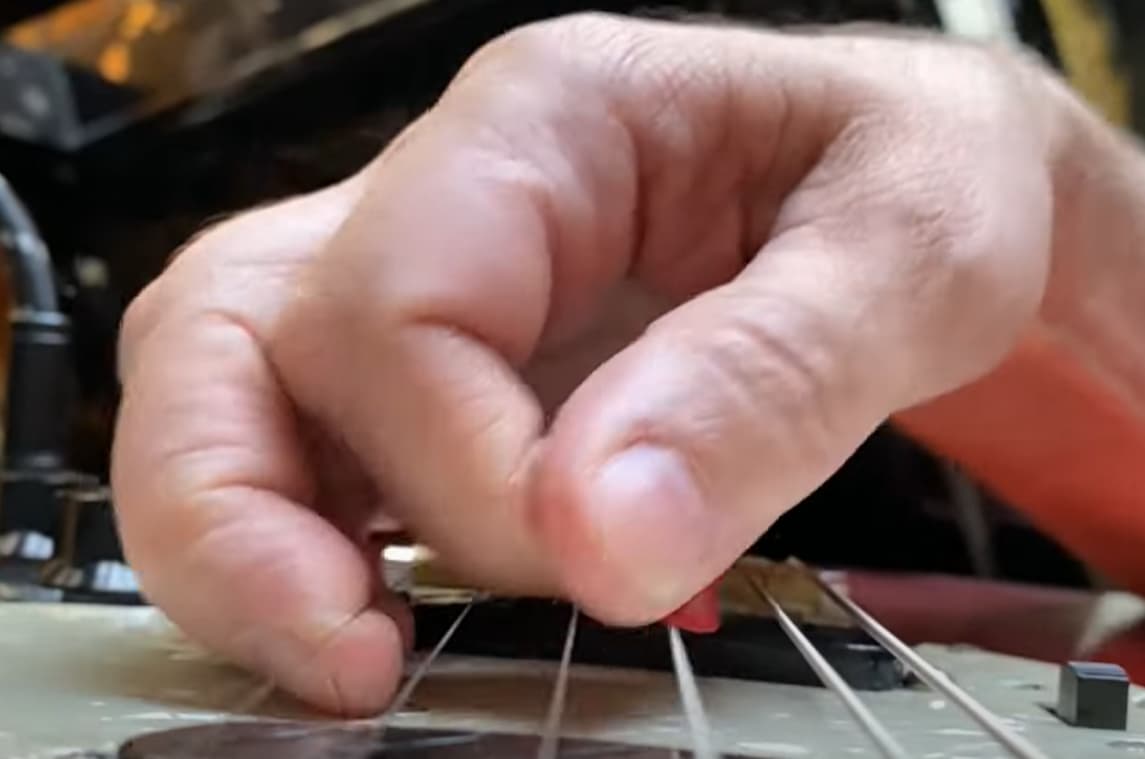Interesting, here’s the same video but on youtube so I can slow it down.
If I slow down that middle section (where he already slows it down) I don’t know if I’d say any of these pick strokes look like “a lot” of pick going through the string. Though, that may be relative lol! What is “a lot” anyway?
Here are some stills, right as the pick hits the string:
That’s about as close to the tip of the pick as you can get without missing the string
Here’s an upstroke, a little more pick depth (is it a lot???)
More interesting yet, there is definitely more resistance on the upstrokes though. The strings get stretched. This is a split second later on that same stroke:
Here’s another upstroke. Boing!!!
I don’t see anything like that happening on any of Troy’s down strokes.
They all look just like this: It’s not immediately obvious but that is the last frame I could lock in prior to the pick cutting through the string. No visual indication of the string getting stretched
I can’t speak for him, but we know everything he does at this level, he describes as feeling “easy” or “smooth”. My guess is because he plays with a lot of power. Whether that string stretches or not is probably something he’s not feeling. But it clearly looks like the upstrokes are “sticky”, as compared to the down strokes.
I can do a DWPS/USX form similar to this, and even though the pick depth is shallow, on all the “rest” strokes it does look like the pick goes deep, because the part of the pick that rests on the string is way higher than the part that cuts through the string. That’s likely because the pick is slanted.
Like everything I post, who knows if any of that is correct lol! That’s my perception of it though.


